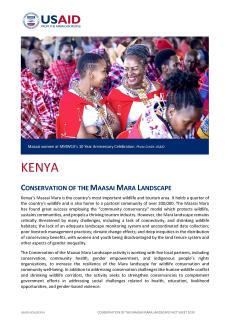Kenya’s Maasai Mara is the country’s most important wildlife and tourism area. It holds a quarter of the country’s wildlife and is also home to a pastoral community of over 200,000. The Maasai Mara has found great success employing the “community conservancy” model which protects wildlife, sustains communities, and propels a thriving tourism industry. However, the Mara landscape remains critically threatened by many challenges, including a lack of connectivity, and shrinking wildlife habitats; the lack of an adequate landscape monitoring system and uncoordinated data collection; poor livestock management practices; climate change effects; and deep inequities in the distribution of conservancy benefits, with women and youth being disadvantaged by the land tenure system and other aspects of gender inequality.
The Conservation of the Maasai Mara Landscape activity is working with five local partners, including conservation, community health, gender empowerment, and indigenous people’s rights organizations, to increase the resilience of the Mara landscape for wildlife conservation and community well-being. In addition to addressing conservation challenges like human-wildlife conflict and shrinking wildlife corridors, the activity seeks to strengthen conservancies to complement government efforts in addressing social challenges related to health, education, livelihood opportunities, and gender-based violence.


